Compared: 2023 Cadillac CT4 vs. 2023 Cadillac CT5
These two sedans keep Cadillac's performance-luxury ethos alive.
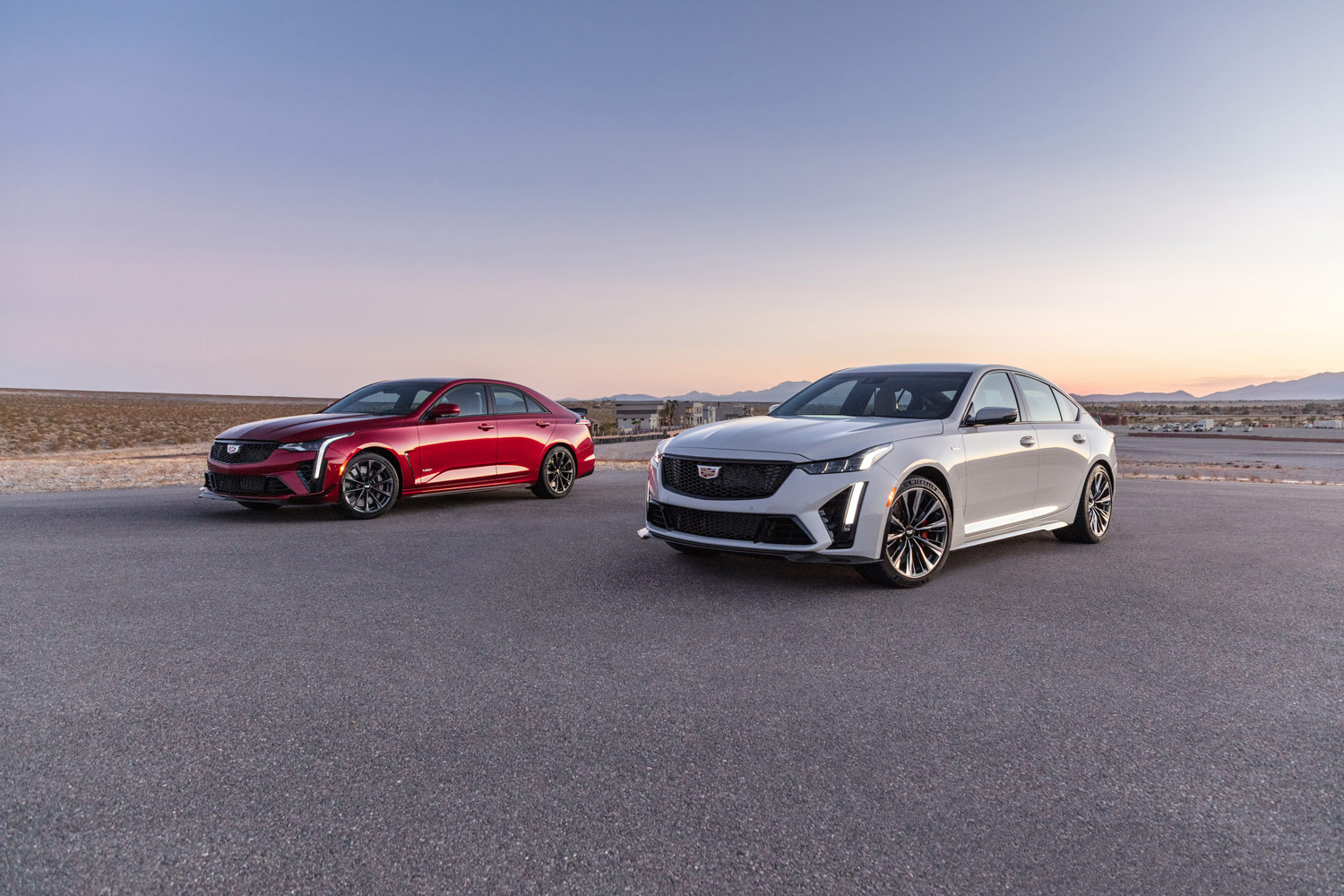 Cadillac | CT4-V Blackwing (left) and CT5-V Blackwing
Cadillac | CT4-V Blackwing (left) and CT5-V Blackwing
Though Cadillac plans to go fully electric by 2030, its current lineup still boasts two gas-powered passenger cars: the compact CT4 and mid-size CT5. These sedans punch above their weight with spec pages to rival those of the German stalwarts, yet they come in several thousand dollars cheaper. Plus, the V-Series and rear-drive-only Blackwing models (which confusingly never had Cadillac’s now-dead Blackwing, twin-turbo V8) capitalize on driving fun with high-horsepower engines and accompanying performance equipment, such as Brembo brakes, aero addenda, and magnetorheological dampers.
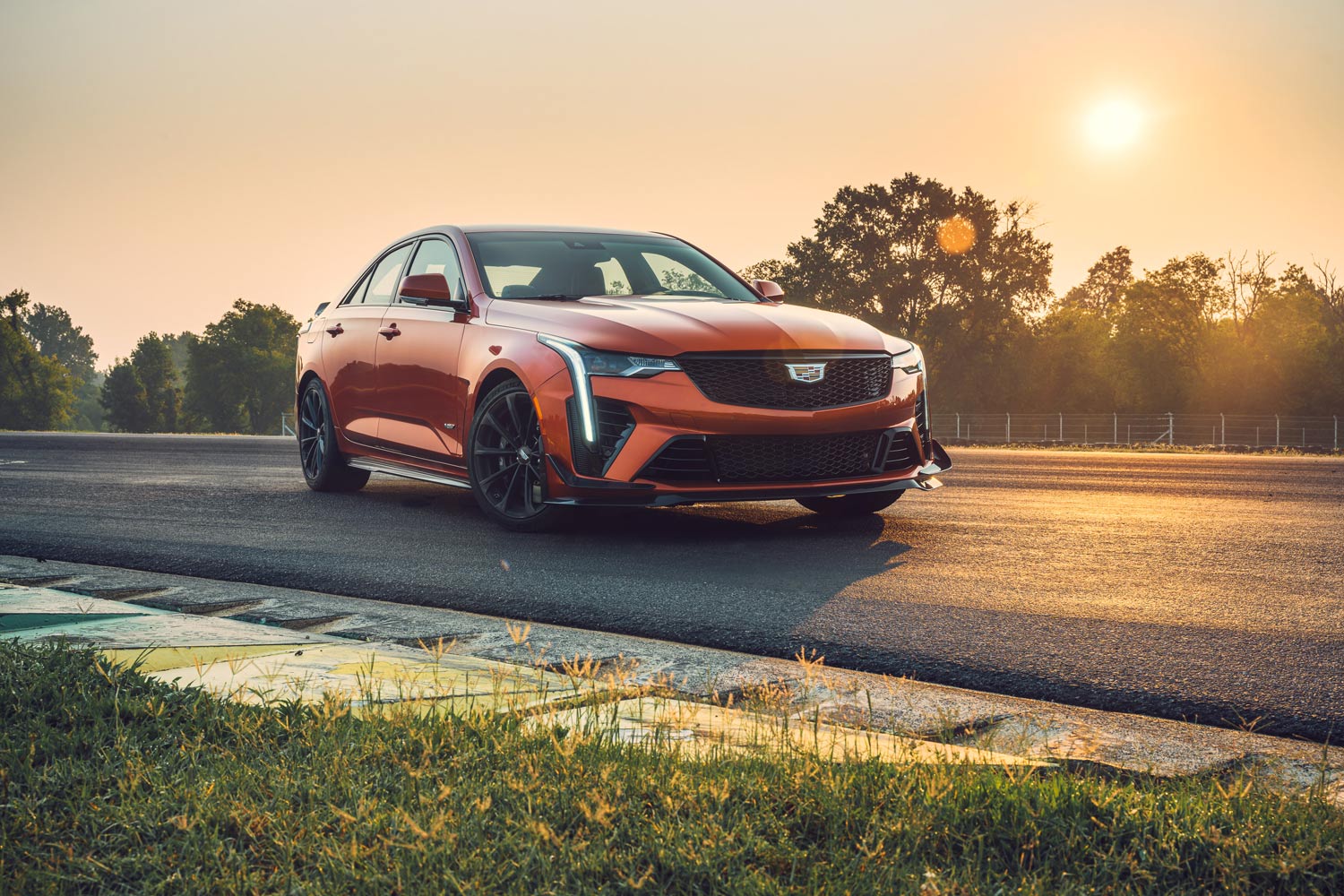 Cadillac | CT4
Cadillac | CT4
2023 Cadillac CT4 vs. 2023 Cadillac CT5: Price
The smaller of the two Caddys starts at just under $36,000. That model features a 237-hp, turbocharged, 2.0-liter four-cylinder and rear-wheel drive. All-wheel drive will add another $2,000 to the outlay, and if you want the 310-hp, turbo, 2.7-liter four, you’re looking at a base price in the mid-$40,000s. Go one step up the performance ladder and you’ll find the $48,000 CT4-V, which boasts a 325-hp version of the aforementioned 2.7-liter. And then there’s the top-dog, $62,000 Blackwing: It muscles about with a 472-hp, twin-turbo, 3.6-liter V6 under hood and leaves the task of shifting up to drivers with a standard manual transmission. (An automatic is available for more coin.)
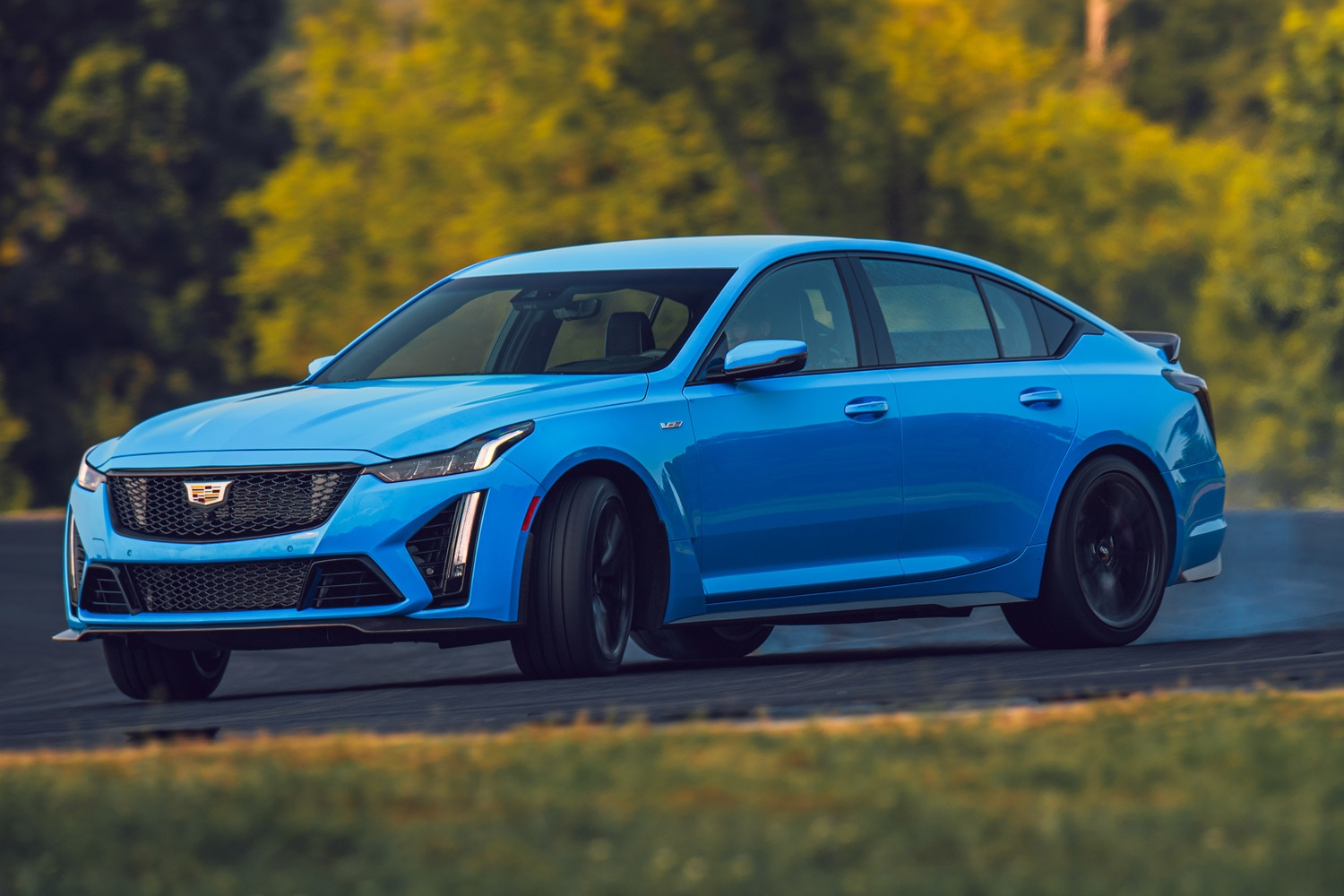 Cadillac | CT5
Cadillac | CT5
The midsize CT5, meanwhile, opens just under $40,000 with the same powertrain as the entry CT4. All-wheel drive is also on the table here for a few thousand dollars. Select the mid-level Premium Luxury trim and you can option Cadillac’s 335-hp, twin-turbo, 3.0-liter V6. The V-Series reaps 360 ponies from that engine and costs around $52,000. But that’s nothing compared with the CT5-V Blackwing. You’ll need more than $92,000 to take that 668-hp bruiser home—if you can find one, that is. Cadillac warns they’re in limited supply.
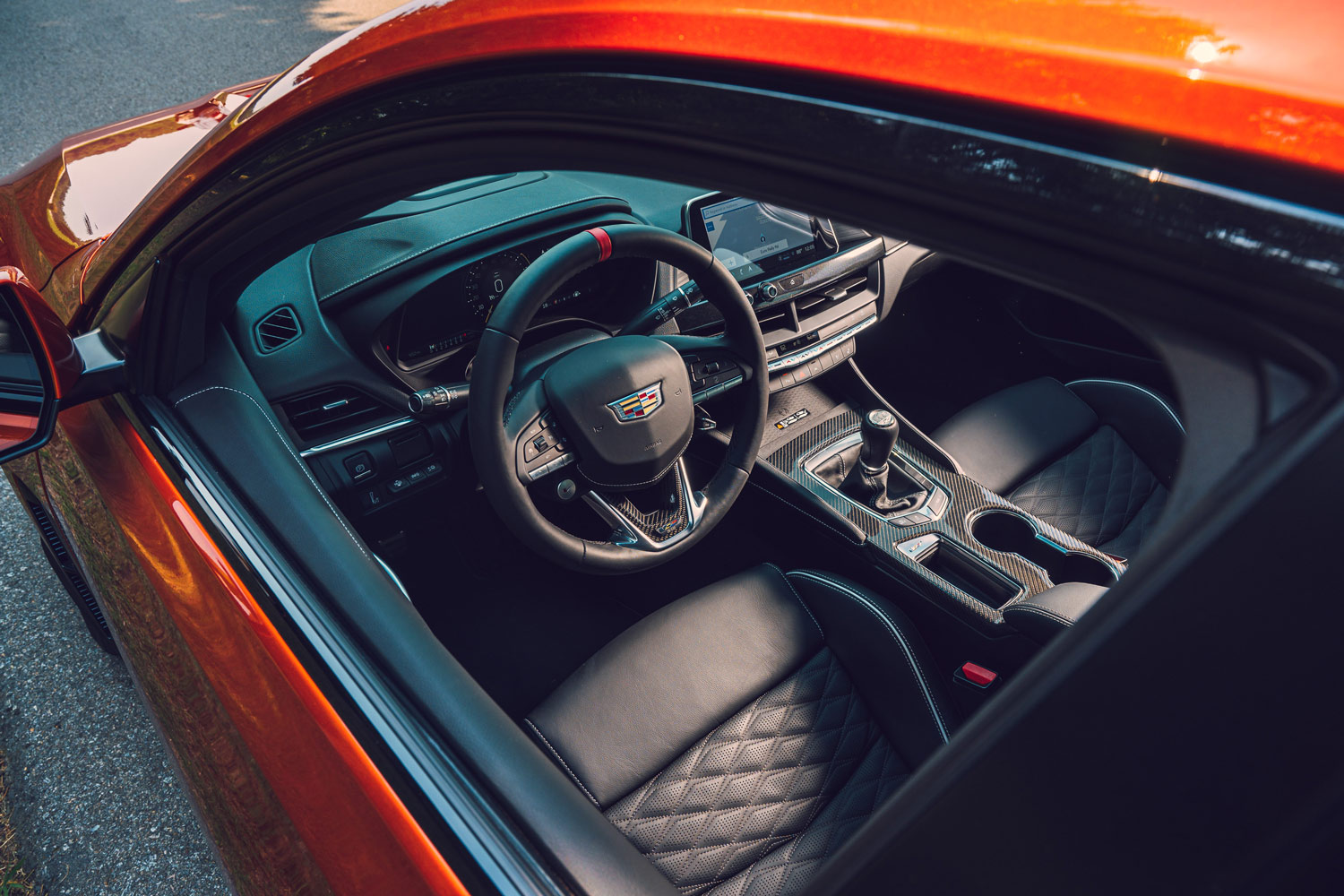 Cadillac | CT4
Cadillac | CT4
2023 Cadillac CT4 vs. 2023 Cadillac CT5: Interior
Base to base, the CT5 has few interior benefits over the CT4. Its infotainment screen is larger, at 10 inches to the CT4’s 8, and… that’s about it. Despite being in two different size classes—compact and midsize sedan, respectively—neither vehicle is particularly spacious inside, nor does it leave much room for your stuff. The CT4 offers 10.71 cubic feet of cargo space, and the CT5, 11.9.
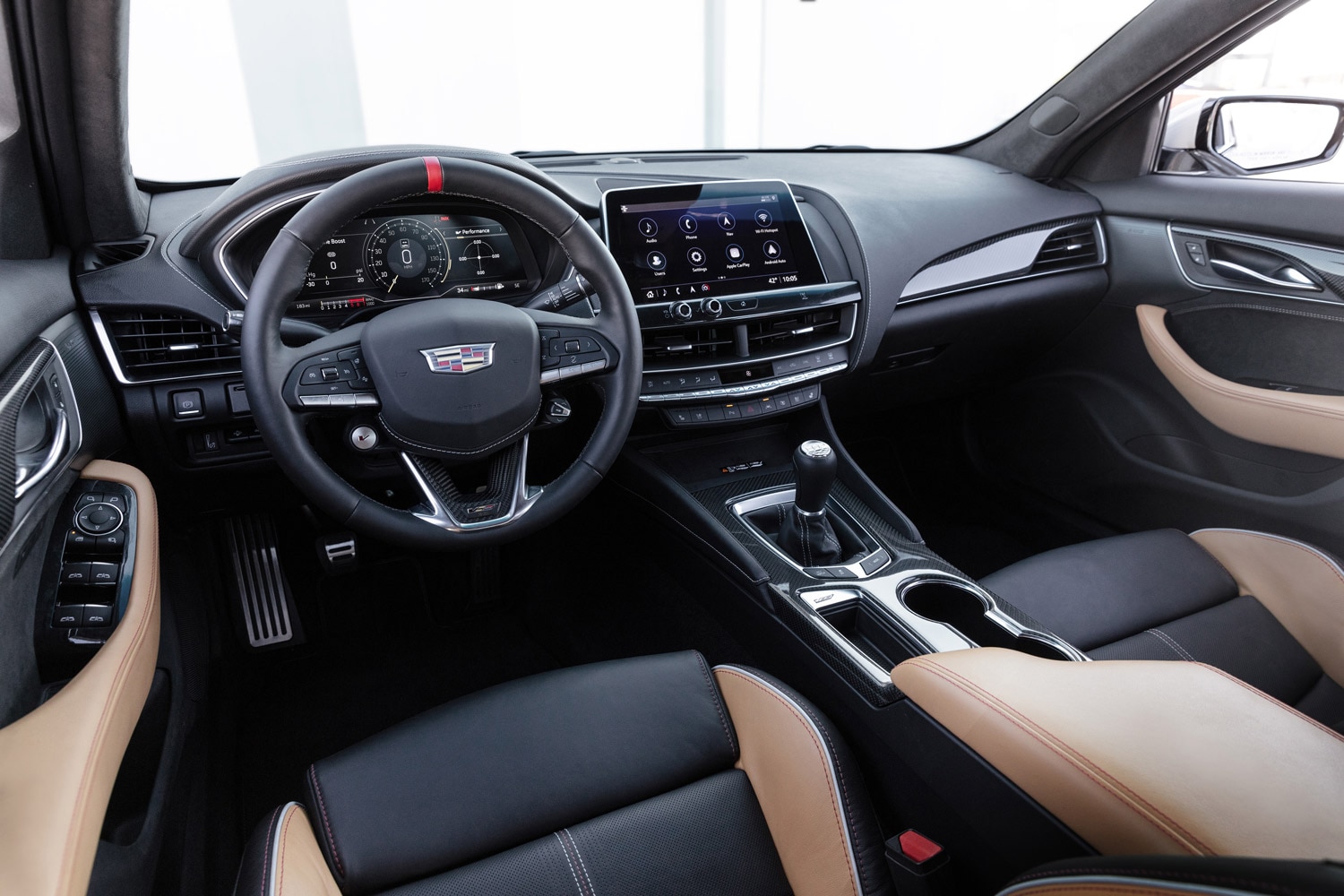 Cadillac | CT5
Cadillac | CT5
Regardless of the model, you’ll need to choose the Premium Luxury trim level or better if you want leather seats and adaptive cruise control. The V-Series and Blackwing sedans jazz up the interior with the usual sporty flair: carbon-fiber trim, heavily bolstered seats, alloy paddle shifters, etc.
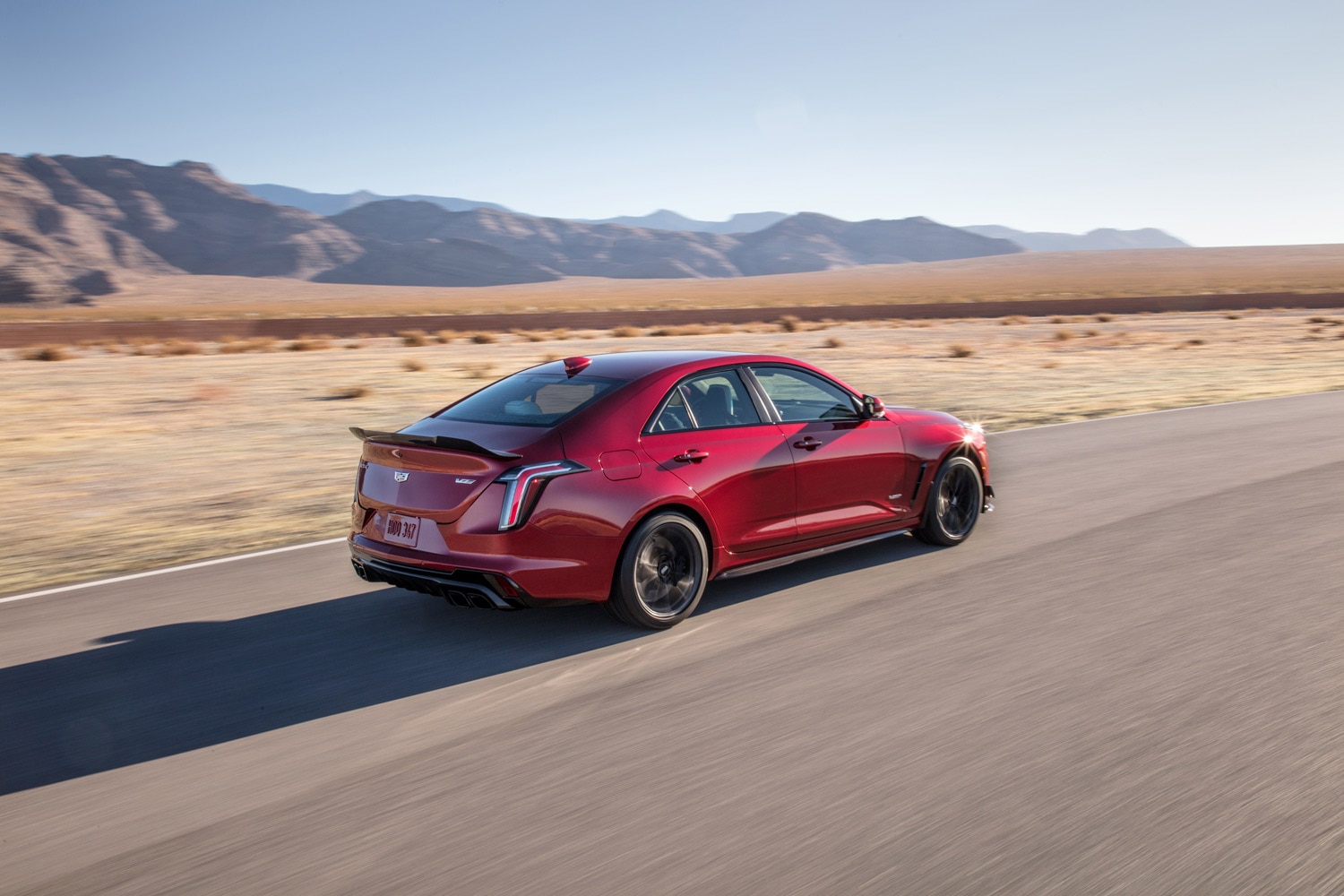 Cadillac | CT4
Cadillac | CT4
2023 Cadillac CT4 vs. 2023 Cadillac CT5: Fuel Economy
You’ll want to put premium fuel in any of these Cadillacs; in fact, the base models won’t make their full power without it. As you might expect, the entry CT4 with the lowest-power engine and rear-wheel drive performs the best on the EPA’s combined cycle, seeing 27 mpg. Fuel economy slips by a point or two with each engine upgrade and the addition of all-wheel drive. The track-star CT4-V Blackwing returns the worst numbers, with the automatic model managing 19 mpg combined and the manual, 18.
 Cadillac | CT5
Cadillac | CT5
The base CT5, despite its larger size, performs just as well as the entry CT4 in combined fuel economy, with 27 mpg. Upgrade to a V6 model (with either engine tune) and that drops to the low 20s. The manual-equipped CT5-V Blackwing, with 15 mpg combined, sits at the bottom of the efficiency spectrum in this comparison.
Written by humans.
Edited by humans.
 Beth Nichols
Beth NicholsAfter graduating from the University of Michigan, Beth Nichols stumbled into automotive journalism and found her footing, jumping between a few car magazines before going freelance. Her head, once full of useless facts about literature and art history, now holds useless facts about vehicles. She edits, checks, and occasionally creates content for Capital One, and though she understands it’s customary to write a bio in the third person, I don’t like it.
Related articles
View more related articles